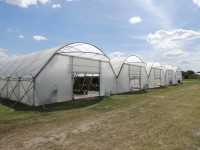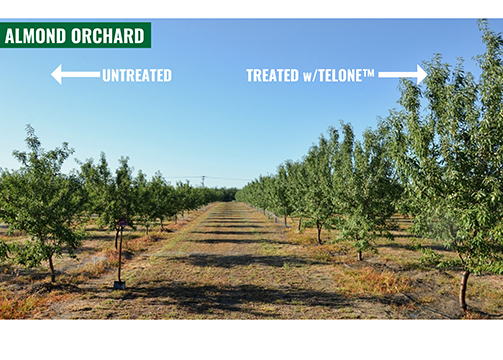Protected Ag Proving Its Place In Florida


Skeeter Bethea has grown fresh produce in Florida for years and has learned a lot about the nuances of production in the state’s tricky climate. Through that experience, he has become a believer in the potential of protected agriculture.
His production expertise has landed him work with Enza Zaden to establish tunnels at the company’s Myakka City research station, and more recently with DiMare to manage its protected ag program.
“What we are looking for is a consistency in yield and quality throughout the season,� says Bethea. “We need ways to mitigate risks associated with heavy rain and frost. I had been working for Enza Zaden, which has markets in 27 countries on every major continent. So, they are developing varieties to be grown all over the world in all kinds of structures.
“We wanted to see what we could do in Florida with simple screen structures and varieties that are suited here. We’ve found that our little structures work well, but that was after some learning and tweaking.�
High Tunnel Basics
The most important factor in protected ag production in Florida is air flow. The area where Enza Zaden’s tunnels are located near Myakka City sees about 134 days per year at 90°F or better. Bethea says moving hot air out of the growing zone inside the structure is critically important.
“We are using a basic half-acre concept with five houses (150 feet long x 28 feet wide), which uses passive ventilation,� he says. “We are not using a lot of natural gas or electricity in these structures. It is very similar to how Spain grows under cover. It is really a sustainable way to grow because we are reusing pots, stakes, strings, and plastic for a number of years.�
Bethea says planting in tunnels starts around mid-September with a goal of harvest starting Dec. 1 and running through May 1. “For me, I like to induce heat in these plants and get their drivetrain going,� he says. “Then when we get into February and March and the sun is coming back up over the Northern Hemisphere and it’s getting hotter, that is when you pull your shade cloth above the trellis. Then you have your hot air blowing out the top and your cool air coming in underneath. It is all about air flow.
“Our planting date is Sept. 15. Before then, you really don’t get enough differential between day and nighttime temperatures. The plant just wants to be vegetative. When I say harvest through May 1, I am being really conservative. If you are a good grower, you can go a good bit longer.�
Prolific Production
Standard goals show yields can boom under cover. For tomatoes in the research trial, the production target is 20 pounds per plant; peppers 11 pounds per plant; and cucumbers 15 pounds per plant. “We are putting a plant population of 10,667 plants per acre in these tunnels,� says Bethea. “You do the math. On tomatoes, we are looking for an easy 220,000 pounds per acre.
“I tell folks one acre under tunnels equals about five acres of open field production from an economic standpoint. My goals are higher than the standard yield goals I listed. These were more in a research setting. A good grower in a commercial setting can achieve a 7:1.�
Tunnel Tip
Pollination is a big deal in protected ag structures. There is not enough air movement to get pollen moving in the enclosed environment. “We use bees and blow air every day,� says Bethea. “Between 11:00 a.m. and 1:00 p.m., when the humidity levels are lowest, we use a leaf blower on the lowest setting to briefly shake plants to get pollen moving.�










